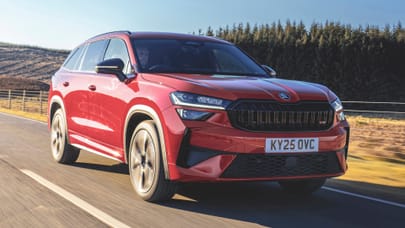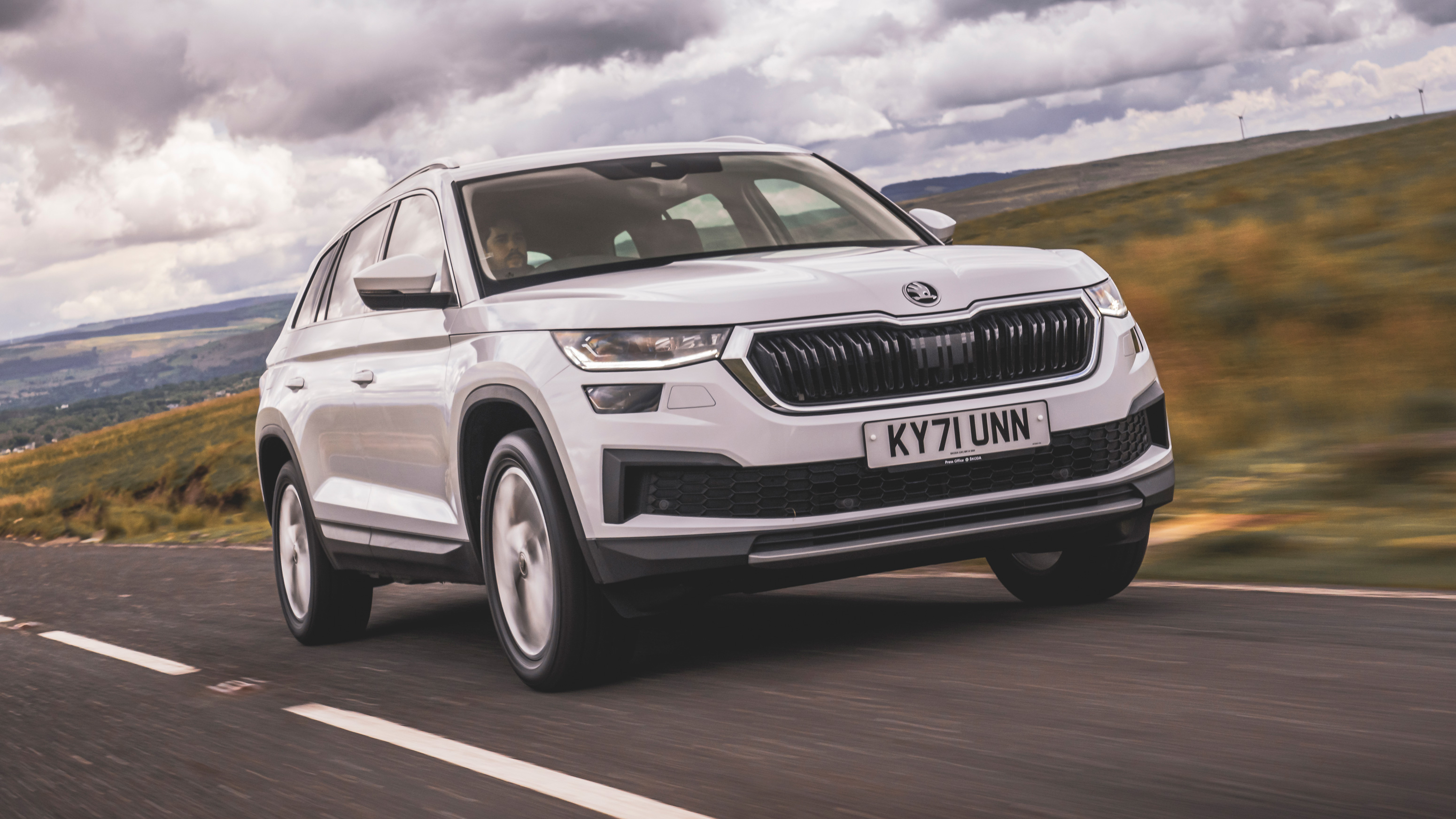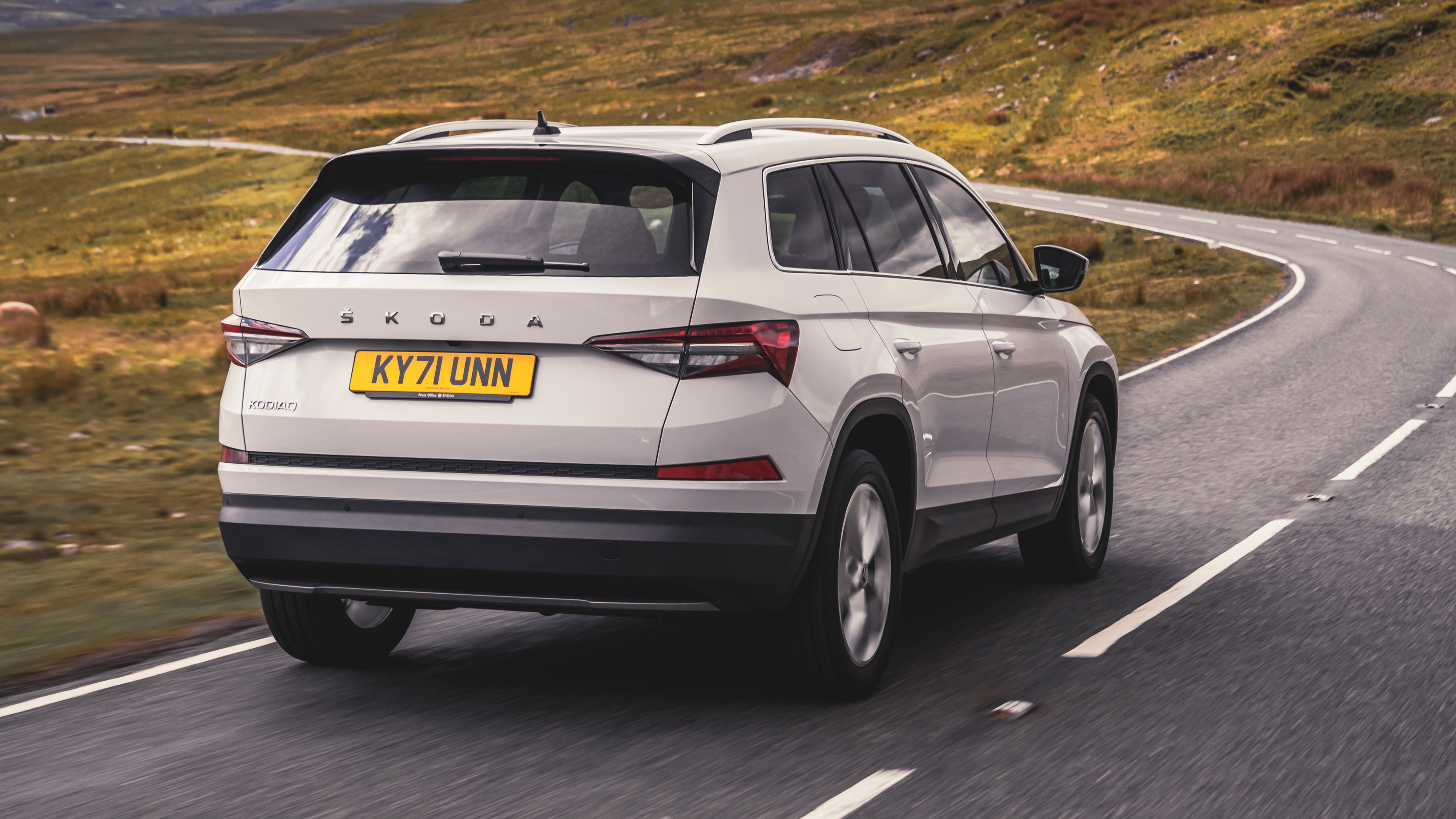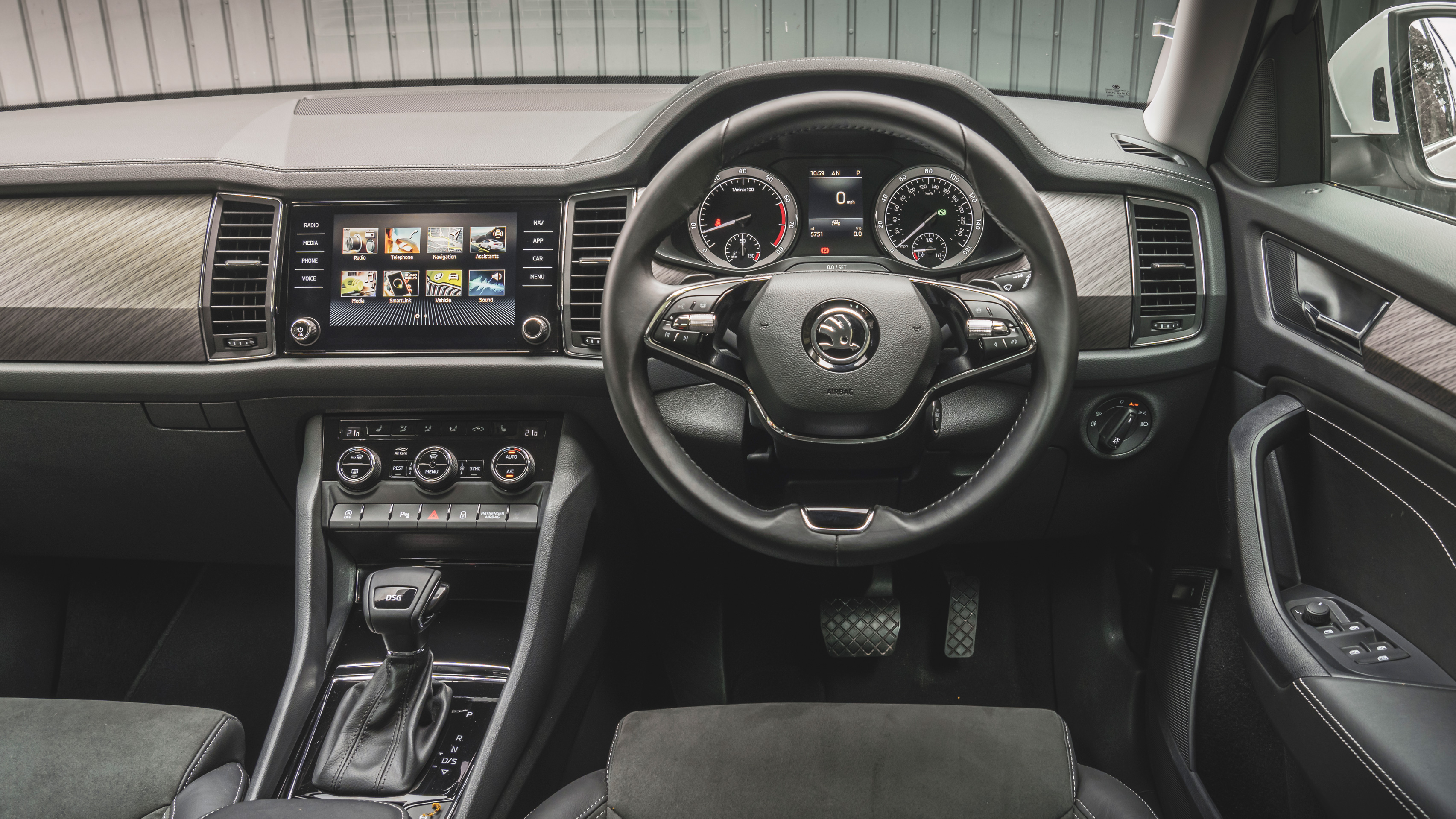
Driving
What is it like to drive?
The Kodiaq is actually pretty light for a car of its size and type – an entry level five-seater petrol is only 1.5 tonnes – but don’t think that makes it especially fun or agile. It’s based on the familiar MQB platform (like the VW Passat and others) and drives accordingly. This is a calming car that responds best to measured, progressive inputs. It feels substantial and well judged, with precise, cohesive controls that make piloting the car a doddle.
Sure there’s a bit of wind noise from around the massive door mirrors, but generally speaking this is a quiet, untaxing car in which to cover long distances. Comfortable, too, though the Sportline model’s big wheels don’t help matters (even if they look the part). When all’s said and done, the Kodiaq drives exactly as you’d want and expect a seven-seat family SUV to drive. Peacefully, predictably and progressively. And it won’t make your kids car sick.
What about the engines?
There are five engines to choose from – 1.5-litre and 2.0-litre turbocharged petrols and 2.0-litre turbodiesels. All are known quantities from elsewhere in the VW Group. None come with even mild-hybrid tech.
The smaller petrol makes 148bhp and 184lb ft and comes with front-wheel drive and a seven-speed twin-clutch automatic that’s fitted as standard across the range. It does a decent job, but if you're regularly going to be carrying a full load or towing something like a caravan or horse box then you'll want to look at a beefier engine.
The lesser 2.0-litre diesel also makes 148bhp but with a more substantial 266lb ft – it’s no quicker than the petrol but gets better fuel economy in the official test. It also gets the option of all-wheel drive. Meanwhile the 187bhp 2.0-litre petrol and 197bhp 2.0-litre diesel are only available together with all-wheel drive and the DSG, which makes them quite pricey.
Same goes for the now £47k vRS, though it at least gets a very natty set of aero alloy wheels to set it apart from everyone else at the school gates and even help lower emissions.
So where should my money go?
Skodas are no longer a solely pragmatic choice. Specced well and they’re as luxuriously appointed as anything else in the ‘sub-Audi’ level of VW Group life. So if you can – or more pertinently, if you’ll be frequently filling the car with people and their effects and need something chunky up front – go big.
The 197bhp diesel has its clattery moments, but it’s largely quiet and doesn’t transmit any nasty vibrations through the seat, pedals, steering wheel or bulkhead. With 295lb ft it pulls strongly, with Skoda claiming 0–62mph in less than eight seconds. It’s a good match for the seven-speed DCT, which shouldn’t give you any problems. There are paddles on the wheel if you want to shift manually for any reason. More than likely you won't bother.
Going for the vRS version of the Kodiaq is a full-on midlife crisis klaxon, but it does the job of hustling about fairly well. It used to have a performance diesel engine, but its petrol replacement is 5bhp more powerful and just as keen. Skoda's done a pretty impressive job of reining in the Kodiaq's bulk, and it's likely your passengers will give up long before the car does. Hard to justify at the price, though.
Variants We Have Tested

Trending this week
- Car Review
BMW iX3







